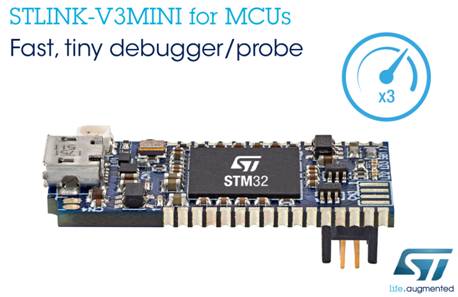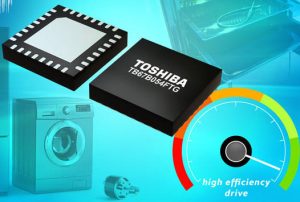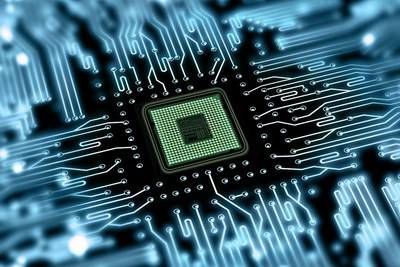(v) detection of infrared light-emitting diodes
1.The infrared light-emitting diodes with positive and negative polarity are mostly encapsulated with transparent resin, and there is a shallow disk at the lower part of the tube core. The wide electrode in the tube is the negative electrode, while the narrow electrode is the positive electrode.Can also be judged from play shape and the length of the pins.In general, the electrical pole near the side plane of the tube body is negative pole, and the other end pin is positive pole.The long pin is positive and the short pin is negative.
2.Multimeter R 10k measuring infrared luminescence tube has positive and negative resistance.Normal, positive resistance value is about 15 ~ 40 k Ω (this value as small as possible);Reverse resistance is larger than 500 k Ω (measured with R x 10 k file, reverse resistance is larger than 200 k Ω).If both positive and negative resistance values are close to zero, it indicates that the internal breakdown of the infrared light-emitting diode has been damaged.If the measured positive and reverse resistance of infinity, would show that the diode has been damaged.If measured, far less than 500 k Ω reverse resistance and explain the diode has leakage damage.
(6) detection of infrared photodiode
Puts a multimeter R x 1 k file, measurement of infrared photosensitive diode is, reverse resistance value.Normal, positive resistance (black pens and the joint pin for the anode) for about 3 ~ 10 k Ω, reverse resistance to 500 k Ω above.If both positive and negative resistance values are 0 or infinity, the photodiode has been broken down or damaged.
In electric resistance infrared photosensitive diode reverse at the same time, with the TV remote control to the measured infrared photosensitive diode receiving window (see figure 4-75).Normal infrared photosensitive diode, in the press of a button on the remote control and its reverse resistance would decrease by more than 500 k Ω between 50 ~ 100 k Ω.The more the resistance decreases, the higher the sensitivity of the photodiode.
Detection of other photodiodes
1.The resistance measurement method covers the light signal receiving window of the photodiode with black paper or black cloth, and then measures the positive and negative resistance values of the photodiode with a multimeter R 1k.Normal, positive resistance value between 10 to 20 k Ω, reverse resistance value is up (infinite).If the measured positive and negative resistance values are small or infinite, the photodiode leakage or open circuit damage.
Then remove the black paper or black cloth, so that the photodiode optical signal receiving window at the light source, and then observe the positive and negative resistance value changes.Under normal conditions, both positive and negative resistance values are of small strain, and the greater the resistance value changes, the higher the sensitivity of the photodiode.
2.In the voltage measurement method, the multimeter is placed in the 1V dc voltage range, the black watch pen is connected to the negative pole of the photodiode, the red watch pen is connected to the positive pole of the photodiode, and the light signal receiving window of the photodiode is aligned with the light source.Normally there should be a voltage of 0.2-0.4v (the voltage is proportional to the intensity of light).
3.Current measurement method will be placed in the multimeter 50 A or 500 A current range, red pen positive, black pen negative, normal photosensitive diode in incandescent light, with the increase in light intensity, its current from A few microamps increased to several hundred microamps.
(8) detection of laser diodes
1.Remove the laser diode from the resistance measurement method, and measure the positive and negative resistance values with a multimeter R 1k or R 10k.Normal, positive resistance value is 20 ~ 40 k, between Ω reverse resistance to up (infinite).If positive resistance value can be measured for more than 50 k Ω, explain the performance of the laser diode has fallen.If measured Ω positive resistance value is larger than 90 k, then the diode has serious aging, can no longer in use.
2.The current measurement method USES a multimeter to measure the voltage drop at both ends of the load resistance in the laser diode drive circuit, and then estimates the current value flowing through the tube according to ohm's law. When the current exceeds 100mA, if the laser power potentiometer is adjusted (see figure 4-76), and the current has no obvious change, the laser diode can be judged to be seriously aging.If the current surges out of control, the optical cavity of laser diode is damaged.
(9) detection of varactor diodes
1.Some varactor diodes have a black mark on one end, this end is a negative pole, and the other end is a positive pole.In addition, both ends of the shell of the varactor diode are coated with yellow ring and red ring respectively. One end of the red ring is positive pole and the other end of the yellow ring is negative pole.
The positive and negative polarity can also be determined by measuring the positive and negative voltage drops of the varactor diode with the diode of the digital multimeter.Normal varactor, when measuring the forward voltage drop table reading of 0.58 ~ 0.65 V.When its reverse voltage drop is measured, the meter reads the overflow symbol "1".When the forward voltage drop is measured, the red watch pen is connected to the positive pole of the varactor diode, and the black watch pen is connected to the negative pole of the varactor diode.
2.The positive and negative resistance values of varactor diodes are measured at R 10k of the pointer type multimeter.A normal varactor diode has positive and negative resistance values of infinity.If the varactor is being measured, reverse resistance have a certain value or are 0, is the diode leakage or damage of breakdown.
(10) double-base diode detection
1.Electrode discriminant puts multimeter R x 1 k file, double-base diode is measured with two pens and three electrodes between any two electrodes in the direction of resistance, will have two electrodes is measured between the positive and reverse resistance are 2 ~ 10 k Ω, the two electrodes is the base and the base B1 B2, another electrode is emitter E.Then connect the black watch pen to the emitter E, and use the red watch pen to touch the other two electrodes in turn. Generally, two different resistance values will be measured.In a measurement with a small resistance value, the red watch pen is connected to the base electrode B2, and the other electrode is the base electrode B1.
2.The performance of the diode can be judged by measuring whether the resistance between the electrodes is normal.With a multimeter R x 1 k file, black pens and emitter E, red pens and, in turn, connect the two base (B1 and B2), normal shall have thousands of Europe to ten thousands of the resistance value.Then connect the red watch pen to the emitter E, and the black watch pen to the two base poles in turn. The normal resistance value is infinite.
Double-base diode between two base (B1 and B2) of positive and reverse resistance for 2 ~ 10 k Ω range, if measured a resistance value between the poles and the normal value is large, then the diode has been damaged.
(xi) bridge heap detection
1.The detection of the whole bridge most of the rectifier whole bridge, are marked with "+", "-", "~" symbols (where "+" is the positive pole of the output voltage after the rectifier, "-" is the negative pole of the output voltage, "~" is the ac voltage input), it is easy to determine the electrode.
During the detection, the positive and negative resistance values of the rectifier diodes between the "+" pole and the two "~" poles and the "-" pole and the two "~" poles (the same measurement method as common diodes) can be measured to determine whether the whole bridge is damaged.If the positive and negative resistance values of the whip diodes in the whole bridge are 0 or both are infinite, it can be judged that the diode has been broken down or damaged.
2.The detection of the half-bridge is composed of two rectifier diodes. It can be determined whether the half-bridge is normal by measuring the positive and negative resistance values of the two diodes inside the half-bridge with a multimeter.
(12) detection of high voltage silicon reactors
The high-voltage silicon reactor is composed of a number of high-voltage rectifier diodes (silicon particles) in series. During detection, the positive and negative resistance values can be measured at R 10k of the multimeter.Normal high-voltage silicon stack, its positive resistance value is larger than 200 k Ω, reverse resistance to infinity.If both positive and negative resistance values are measured, it indicates that the high voltage silicon reactor has been damaged by soft breakdown.
(13) variable resistance diode detection
Measured with a multimeter R x 10 k file is, reverse resistance value of the variable resistance diode, the normal high frequency resistance diode forward resistance value (black pens and pick up the positive) was 4.5 ~ 6 k Ω, reverse resistance to infinity.If the positive and negative resistance values are small or infinite, the resistance diode is damaged.
(14) schottky diode detection
Two-terminal schottky diodes can be measured with a multimeter R 1.Normal, its positive resistance (black pens and connect the anode) is 2.5 ~ 3.5 Ω, on resistance to infinity.If both positive and negative resistance values are infinite or close to 0, the diode is open or broken.
Three-terminal type to schottky diode should be measured its public side, discriminant out of a total of Yin, the pipe or Yang on the tube, and then measured two diode is, reverse resistance value.
What's the difference between a schottky diode and a quick recovery diode
Fast recovery diode refers to the reverse recovery time is very short diode (below 5us), the process is mostly used with gold measures, the structure of PN junction structure, some use improved PIN structure.The positive pressure drop is higher than ordinary diode (1-2 v), reverse voltage under 1200 v.From the performance can be divided into two levels of fast recovery and super fast recovery.A reverse recovery time baina lates seconds or longer, the latter under 100 nanoseconds.
Schottky Barrier (w/w) is a Barrier (w/w) based on metal semiconductor contact (w/w). At low voltage (w/w), it should be at a low voltage (w/w).
These two types of tubes are usually used for switching power supplies.
Schottky diode and fast recovery diode difference: the former recovery time is about 100 times smaller than the latter, the former reverse recovery time is about a few nanoseconds ~!
The former has the advantages of low power consumption, large current, ultra-high speed ~!The electrical characteristics of course are diode ah ~!
Rapid recovery diode in the manufacturing process using gold, pure diffusion and other processes, can get a higher switching speed, but also can get a higher voltage.At present, fast recovery diodes are mainly used as rectifier components in inverter power supply.
Schottky diode: the reverse voltage withstand value is lower than 40v-50v, the on-state voltage drop is 0.3-0.6v, which is less than the reverse recovery time of 10nS.It is a metal semiconductor junction diode with schottky characteristics.The forward starting voltage is low.Its metal layer besides material, still can use the material such as gold, mo, ni, titanium.Its semiconductor material USES silicon or gallium arsenide, mostly N - type semiconductor.This device is conducted by a majority of carriers, so its reverse saturation current is much larger than that of the PN junction conducted by a minority of carriers.Because the storage effect of minority carriers in schottky diode is very small, its frequency response is only limited by RC time constant, so it is an ideal device for high frequency and fast switching.Its working frequency can reach 100GHz.Also, MIS (metal-insulator-semiconductor) schottky diodes can be used to make solar cells or light-emitting diodes.
Quick recovery diode: with a positive guide voltage drop of 0.8-1.1v, a reverse recovery time of 35-85ns, a quick conversion between on and off, improved device frequency and waveform.Rapid recovery diode in the manufacturing process using gold, pure diffusion and other processes, can get a higher switching speed, but also can get a higher voltage.At present, fast recovery diodes are mainly used as rectifier components in inverter power supply.

 انگلیسی
انگلیسی  چینی
چینی  آلمانی
آلمانی  کره ای
کره ای  ژاپنی
ژاپنی  فارسی
فارسی  Portuguese
Portuguese  Russian
Russian  اسپانیایی
اسپانیایی 





